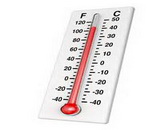
Fever, also known as pyrexia and febrile response, is defined as having a temperature above the normal range due to an increase in the body's temperature set-point. There is not a single agreed-upon upper limit for normal temperature with sources using values between 37.5 and 38.3 °C (99.5 and 100.9 °F).
A fever can be caused by many medical conditions ranging from the not serious to potentially serious. This includes viral, bacterial and parasitic infections such as the common cold, urinary tractinfections, meningitis, malaria and appendicitis among others. Non-infectious causes include vasculitis, deep vein thrombosis, side effects of medication, and cancer among others.
Organism species: Mus musculus (Mouse)
| CATALOG NO. | PRODUCT NAME | APPLICATIONS | |
| Models | n/a | Model for Fever | Disease Model Customized Service Offer |
| Tissues | n/a | Tissue of Fever (If Necessary) | Tissue Customized Service Offer |
| Serums | n/a | Serums of Fever (If Necessary) | Serums Customized Service Offer |
Organism species: Rattus norvegicus (Rat)
| CATALOG NO. | PRODUCT NAME | APPLICATIONS | |
| Models | DSI790Ra01 | Rat Model for Fever | Disease Model |
| Tissues | n/a | Tissue of Fever (If Necessary) | Tissue Customized Service Offer |
| Serums | n/a | Serums of Fever (If Necessary) | Serums Customized Service Offer |
Organism species: Oryctolagus cuniculus (Rabbit)
| CATALOG NO. | PRODUCT NAME | APPLICATIONS | |
| Models | n/a | Model for Fever | Disease Model Customized Service Offer |
| Tissues | n/a | Tissue of Fever (If Necessary) | Tissue Customized Service Offer |
| Serums | n/a | Serums of Fever (If Necessary) | Serums Customized Service Offer |
